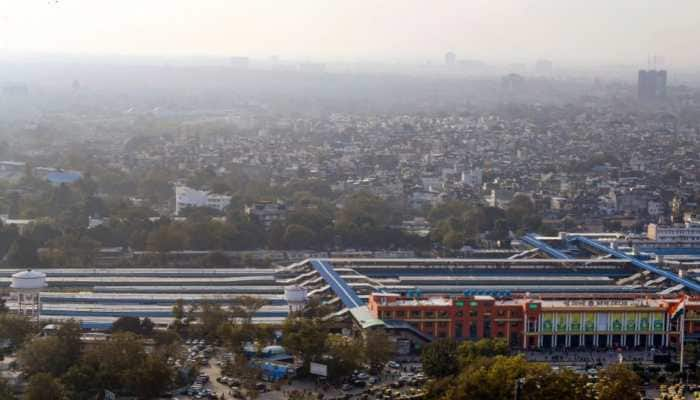India sets up world's first liquid mirror telescope for astronomy- All you need to know
The conventional telescopes have polished glass mirrors on the other hand, as the name suggests, liquid mirror telescopes are made up of reflective liquids.
- The telescope will be used to observe the galaxies and other astronomical elements present at the edge of the world
- About 50L of mercury-filled into a container of the ILMT
- ILMT is capable of generating 10-15 GB per night
Trending Photos
) Image credit: Twitter
Image credit: Twitter New Delhi: India has set up its first-ever 'liquid mirror telescope' at Devasthal Observatory in Uttarakhand. The largest International Liquid Mirror Telescope (ILMT) of Asia has been installed at a height 2,450 metres. The ILMT at the Devasthal Observatory campus which is owned by Aryabhatta Research Institute of Observational Sciences (ARIES) is the world's first liquid-mirror telescope to be commissioned for astronomy. The telescope will be used to observe the galaxies and other astronomical elements present at the edge of the world.
Devasthal Campus of @ARIESNainital showing the 3.6m DOT, 1.3m DFOT and the upcoming 4m International Liquid Mirror Telescope (ILMT).#ShowOffYourTelescope pic.twitter.com/q7EO8lqba3
— ARIES (@ARIESNainital) May 31, 2021
Liquid mirror telescope: What makes it different from conventional telescopes
The conventional telescopes have polished glass mirrors with a single or combination of curved surfaces and are used to observe special celestial objects on specific nights on the other hand, as the name suggests, liquid mirror telescopes are made up of reflective liquids, as in the Devasthal observatory the ILMT has Mercury, and observes a strip of sky capturing all possible celestial objects — from stars, galaxies, supernovae explosions, asteroids to space debris.
How does the Liquid mirror telescope work?
About 50L of mercury-filled into a container which is rotated at a fixed constant speed along the vertical axis of the ILMT. Following the circular motions, the mercury in the container spreads and forms a thin layer in the container forming a paraboloid-shaped reflecting surface which then acts as the mirror. With a diametre of 4 metre, the surface is ideal to collect and focus light.
In yet another achievement, scientists at @ARIESNainital with their Intl counterparts devised ‘International Liquid Mirror Telescope’ (ILMT) that can identify astronomical objects such as supernovae, asteroids, etc. with precision.@PMOIndia @DrJitendraSingh @IndiaDST @dipu_iia pic.twitter.com/vjPqroC0RA
— ISTI Portal (@ISTIPortal) June 2, 2022
Use of Liquid Mirror Telescope
The Liquid Mirror Telescope set up by India in Collaboration with Belgium, Canada, Poland and Uzbekistan was designed and built at the Advanced Mechanical and Optical Systems Corporation and the Centre Spatial de Liège in Belgium.
The ILMT will be generating a huge volume of data as it is capable of generating 10-15 GB/night and it is set to work for the next five years starting October 2022 while observing asteroids, supernovae, space debris, and all other celestial objects from an altitude of 2,450 metres in the Himalayas.
Stay informed on all the latest news, real-time breaking news updates, and follow all the important headlines in india news and world News on Zee News.
Live Tv







)
)
)
)
)
)
)
)
)
)
